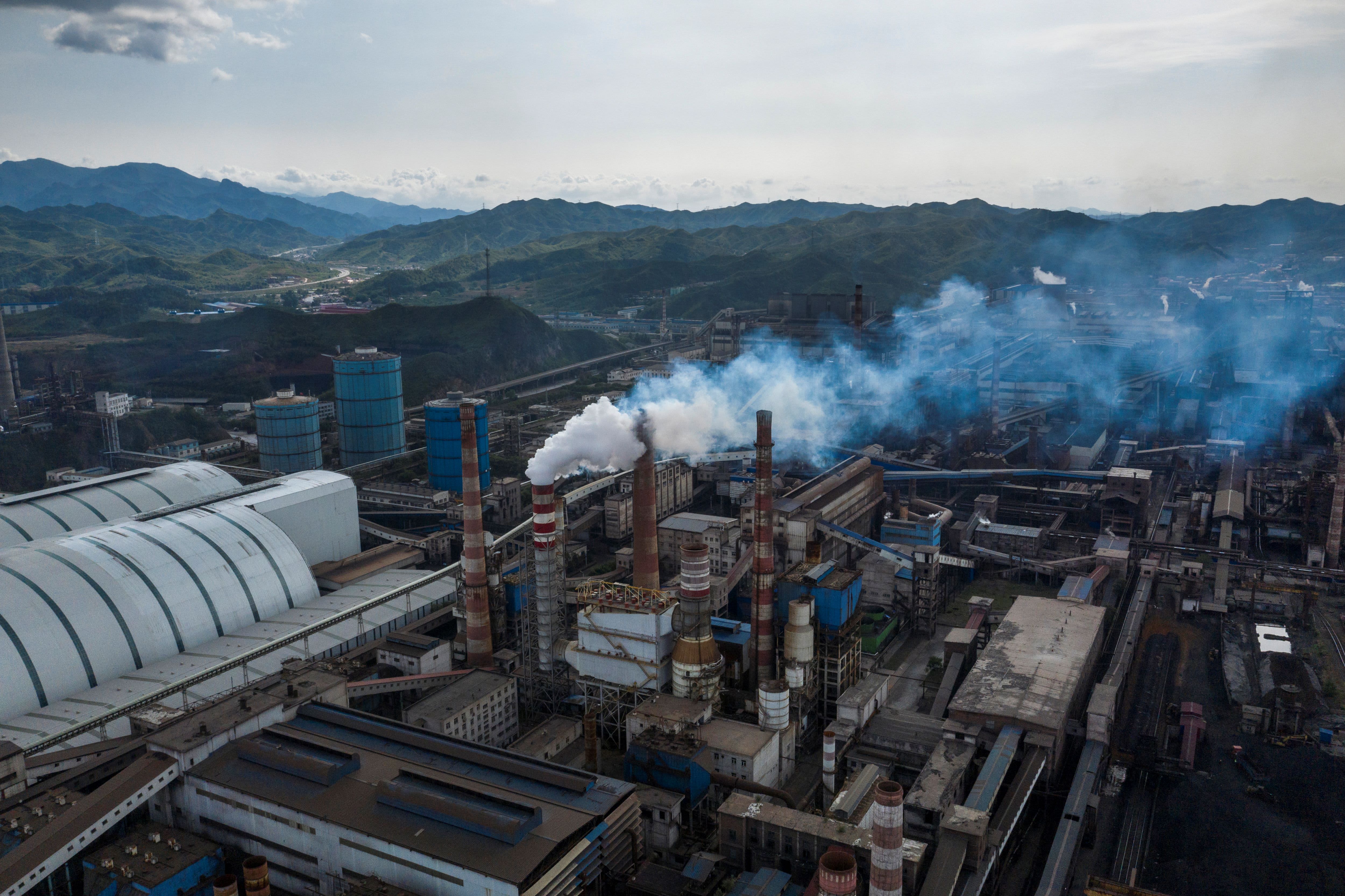
This aerial image taken on June 6, 2019 shows a steel factory in Chengde, China’s northern Hebei province.
FRED DUFOUR | AFP | Getty Images
A new wave of Covid-19 cases in China’s Hebei province triggered transport restrictions in the major steel-producing region.
The lockdowns in Hebei include areas surrounding steel mills, limiting the ability to transport the metal to customers. China is the world’s top steel producer and analysts say Hebei contributes over 20% of the country’s total output.
Coronavirus cases in Hebei have been rising since the start of the year, prompting the province to lock down its capital, Shijiazhuang, and at least two other areas in an effort to contain the spread of the coronavirus.
The curbs are unlikely to affect steel production for now, but they could hurt demand by spurring the manufacturing sector to stop work earlier than planned ahead of the major Lunar New Year holiday, commodity data provider S&P Global Platts said earlier this month.
Demand and prices for raw materials used to make steel like iron ore could also shoot up, according to analysts.
Restrictions in Hebei
Steel deliveries by truck have been suspended in Hebei, leaving rail as the only way to transport steel, Shanghai-based Chinese metal data provider Mysteel said in a note last week. The report said blocked roads have led to completed steel piling up at major mills in the region.
“Partial lockdowns have restricted the transportation of goods, resulting in a sharper build in inventories held by local steel mills rather than at stockists in the first half of January,” said Atilla Widnell, co-founder of Singapore-based Navigate Commodities, in an email to CNBC on Monday.
“We have heard anecdotal evidence that some stockists and traders are reluctant to tie up cash flow in-case a ‘soft lockdown’ is prolonged or intensified,” he added.
S&P Global Platts said inventories are rising at the Jingye Iron & Steel mill in Hebei’s capital city Shijiazhuang. The firm cited a source at the mill, which produces 13 million metric tons of crude steel a year.
Manufacturing, construction sectors stopping work
Manufacturing and construction sites in China are set to stop work earlier than usual ahead of the Lunar New Year holiday between Feb. 11 and 17. That’s likely to hit demand for steel, which is heavily used in those sectors.
The government advised manufacturing and construction workers to return home before the peak holiday travel period, said S&P Global Platts.
“According to market sources, Beijing has done this in (an) effort to reduce the possibility of a spike in COVID-19 cases during and after the Lunar New Year holidays,” the firm wrote.
Work stopping earlier suggests steel demand is set to drop, causing inventories to rise elsewhere.
“Some traders said they were unwilling to increase their steel inventories as they anticipate having to hold on to these for much longer than usual, and with steel prices continuing to soar, building inventories will put pressure on their cash flows,” S&P Global Platts added.
Impact on steel, iron ore
Daniel Hynes, senior commodity strategist at Australian bank ANZ, told CNBC on Monday that risks could spread to iron ore.
“There are concerns that a further rise in coronavirus cases in Hebei could result in some steel making regions being locked down. This would obviously impact demand for iron ore, as steel mills would likely see supply chains disrupted, thus impacting steel production,” he said in an email.
The ripple effects can already be seen in the costs for raw materials used to process steel like coking coal, said energy research consultancy Wood Mackenzie.
Coking coal prices are surging and are about 450 yuan per ton higher than last year, according to Zhilu Wang, research associate at the firm.
“This is due to the restrictions on inter-provincial transportation in Hebei provinces which has resulted in the increase of transportation fee,” said Wang.
While this could in turn support steel prices, Wang predicted it could mildly weaken overall as traders stock less of the commodity due to the Covid uncertainty.




